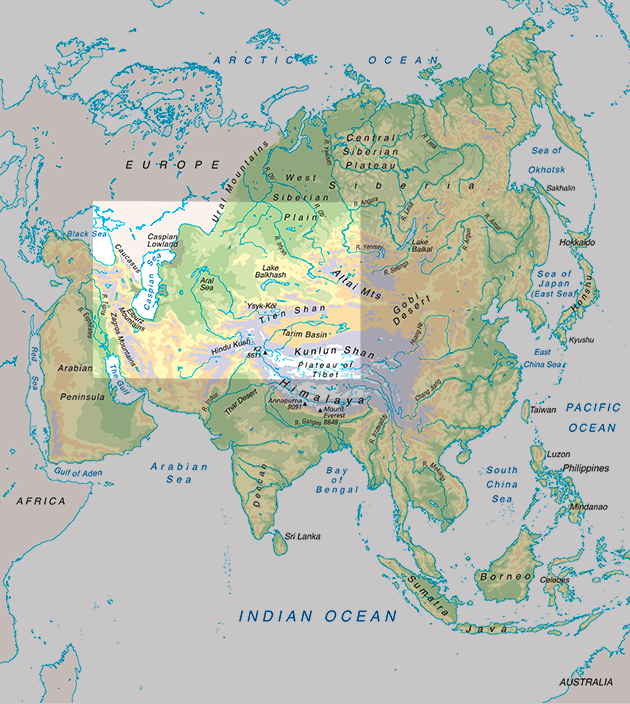
Central Asia
Central Asia is an extremely large region of varied geography, including high passes and mountains, vast deserts and treeless, grassy steppes. It lies at the core of Asia, between China and the Caspian Sea which used to be known as Soviet Central Asia, in the days before the Soviet Union (the USSR) was dissolved in 1991. The five now-independent republics of Kazakhstan, Uzbekistan, Turkmenistan, Tajikistan and Kyrgyzstan were formally under direct Soviet control. Major rivers of the region include the Amu Darya, the Syr Darya and the Hari River. Bodies of water include the Aral Sea, on the border of Kazakhstan and Uzbekistan, and Lake Balkhash, both of which are part of the huge west-central Asian Basin that also includes the Caspian Sea.
The waters of both the Aral Sea and Lake Balkhash have shrunk significantly in recent decades due to diversion of water from rivers that feed them for irrigation and industrial purposes. Water is an extremely valuable resource in arid Central Asia and disputes over ownership of these often lead to international unrest.
Central Asia has acted as a crossroads for the movement of people, goods, and ideas between Europe, Southwest Asia, South Asia, and East Asia.